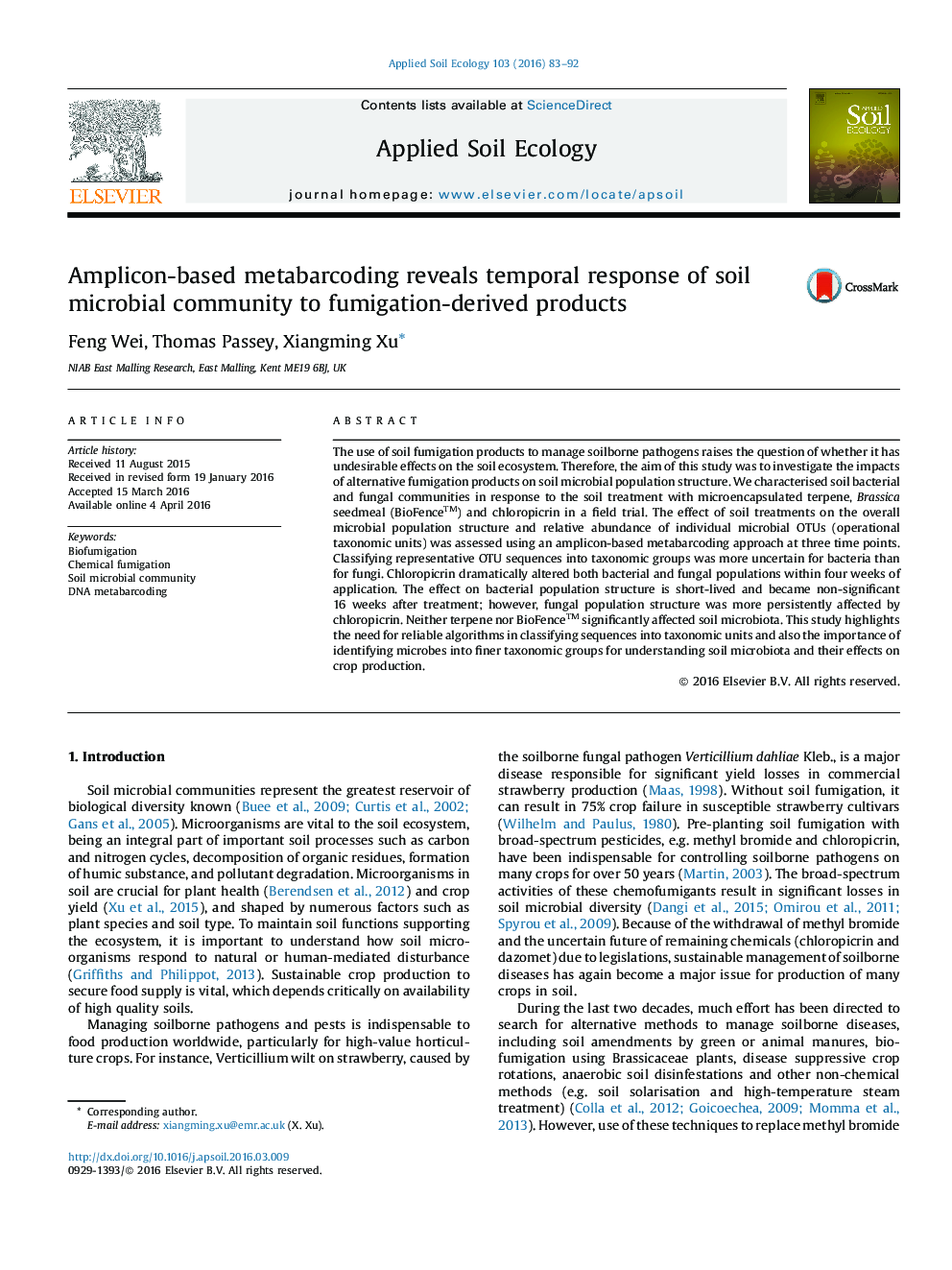| Article ID | Journal | Published Year | Pages | File Type |
|---|---|---|---|---|
| 4381785 | Applied Soil Ecology | 2016 | 10 Pages |
•DNA metabarcoding profiled temporal soil microbial responses to fumigation.•The effects of chloropicrin on bacterial population structure were short-lived.•Fungal population structure was more persistently affected.•Neither terpene nor a Brassica seedmeal significantly affected soil microbiota.
The use of soil fumigation products to manage soilborne pathogens raises the question of whether it has undesirable effects on the soil ecosystem. Therefore, the aim of this study was to investigate the impacts of alternative fumigation products on soil microbial population structure. We characterised soil bacterial and fungal communities in response to the soil treatment with microencapsulated terpene, Brassica seedmeal (BioFence™) and chloropicrin in a field trial. The effect of soil treatments on the overall microbial population structure and relative abundance of individual microbial OTUs (operational taxonomic units) was assessed using an amplicon-based metabarcoding approach at three time points. Classifying representative OTU sequences into taxonomic groups was more uncertain for bacteria than for fungi. Chloropicrin dramatically altered both bacterial and fungal populations within four weeks of application. The effect on bacterial population structure is short-lived and became non-significant 16 weeks after treatment; however, fungal population structure was more persistently affected by chloropicrin. Neither terpene nor BioFence™ significantly affected soil microbiota. This study highlights the need for reliable algorithms in classifying sequences into taxonomic units and also the importance of identifying microbes into finer taxonomic groups for understanding soil microbiota and their effects on crop production.
